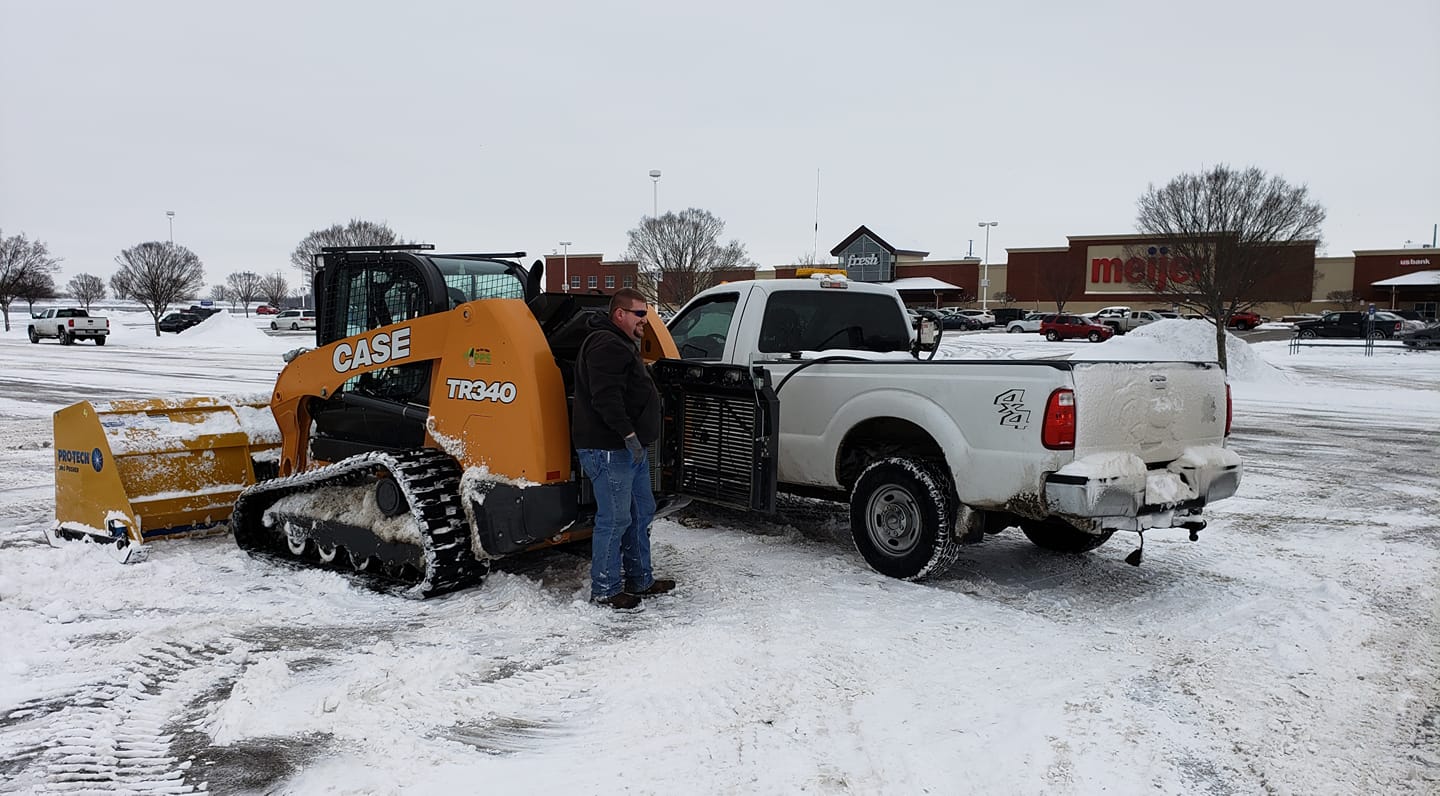%201%20(1).webp)
%201%20(1).webp)

The Importance of Quality Pavement Maintenance


How Weather Extremes Affect Your Westerville Asphalt Pavement
Asphalt driveways and walkways in Westerville are constantly exposed to changing weather. From freezing winter temperatures to hot summers and heavy rain, each season brings conditions that can wear down pavement quickly. When left unchecked, these weather extremes lead to cracks, potholes, surface erosion, and even structural failure. Homeowners may not notice the early signs, but those small changes can spread fast, especially after a few harsh seasonal shifts.
Protecting asphalt surfaces means paying attention to local weather patterns and acting before damage becomes too widespread. Westerville has hot summers, cold winters, and frequent wet weather throughout the year. This kind of climate puts pressure on pavement that hasn’t been sealed or maintained properly. Whether your driveway is brand new or several years old, seasonal damage can weaken it from the top down and the bottom up. Knowing the type of impacts to expect in different weather conditions helps guide smarter asphalt care and repair decisions.
Winter Weather Impact
Winter in Westerville can be hard on pavement. As temperatures drop below freezing and rise again during the day, your asphalt goes through something called freeze-thaw cycles. Water gets into small cracks in the surface, freezes overnight, expands, and then thaws. The more this cycle repeats, the more pressure those cracks experience. Eventually, what started as minor surface marks can lead to large cracks or even widening holes.
Snow and ice also cause surface strain. If snow isn’t cleared well, or if ice lingers for days, the pavement underneath suffers. Moisture doesn’t just sit on top, it creeps in between materials and can pull them apart as it freezes. Salt used for de-icing helps with road safety, but it can be rough on asphalt too. It tends to dry out the top layer, causing it to become brittle and more likely to split.
Preventing winter-related damage requires regular care and quick action:
- Clear snow as soon as possible after any accumulation
- Use calcium chloride-based de-icers instead of rock salt when possible
- Fill small cracks during the fall before winter weather sets in
- Reapply sealcoating every few years to protect against water absorption
If cracks or potholes appear, getting them patched professionally before the next snowfall is the most reliable way to control the damage.
Summer Weather Damage on Asphalt Surfaces
Hot weather comes with its own set of challenges. In Westerville, summer temperatures can rise enough to cause asphalt to soften and lose strength. When the pavement heats up past a certain point, the surface oils rise, and the asphalt begins to lose its stiffness. This can lead to warping, indentation from vehicle weight, and block cracking.
UV exposure is another summer issue. Direct sunlight dries out the pavement’s binder, the part that holds the material together. Without enough flexibility, asphalt becomes more likely to break apart. Homeowners might see surface discoloration, brittle texture, or light cracking if too much sun exposure goes untreated.
Regular upkeep during the summer can go a long way toward reducing heat-related damage:
- Avoid parking heavy vehicles in the same spot over long periods
- Rinse off oil and fuel spills right away to prevent chemical damage
- Schedule sealcoating every few years to act as a barrier against UV rays
- Inspect high-traffic areas monthly to catch early signs of wear
One local homeowner noticed deep tire marks and surface fading after a stretch of 90-degree weather. Turns out, their driveway hadn’t been sealed in over six years. After resealing and making small repairs, the surface now holds up better during heatwaves and looks cleaner throughout the season.
Taking small steps during each season prevents weather extremes from causing bigger, more expensive damage. Knowing what to watch for during Westerville’s hottest months will help keep asphalt in better shape year after year.
Heavy Rainfall and Flooding: A Hidden Threat to Pavement
Rain doesn’t always seem like a big threat to pavement, but in Westerville, it can quietly cause long-term damage. When rainwater isn’t able to drain properly, it starts to collect on the surface or seep into cracks. Over time, this weakens the base that supports the asphalt. Once the base softens or shifts, the pavement above starts to sag, forming low spots or potholes that continue to worsen with more water and foot or vehicle traffic.
Standing water also increases the risk of surface erosion. Even a light drizzle, if repeated often, flushes away small particles of asphalt binders. Driveways that have worn down over the years don’t repel water like they once did, especially if sealcoating hasn’t been done regularly. The more porous the surface, the more easily water will slip beneath it and start breaking things apart from the inside.
To stay ahead of water-related damage, homeowners can focus on these key actions:
- Make sure the driveway slopes slightly away from the home to direct water off the surface
- Keep gutters and downspouts clear and pointed away from paved areas
- Inspect the base of the driveway after major storms for signs of softening or drops
- Patch potholes early to prevent further washout underneath
- Reapply sealcoating to reduce water penetration and improve runoff
One Westerville resident had repeated flooding issues at the bottom of their driveway. After a quick inspection, it turned out tree roots had blocked the nearby drainage channel. Once cleared and patched, the driveway stayed dry even through several heavy summer storms.
Simple Asphalt Maintenance Tips for All-Weather Protection
Staying ahead of weather damage doesn’t always mean major repairs. Year-round maintenance tailored to match Westerville’s climate can prevent small issues from growing into bigger ones. It’s best to create a routine that addresses different types of wear based on the season.
Here are some useful tips:
1. Do a full visual inspection once every three months and after major weather swings
2. Seal small cracks early with filler to stop water and debris from expanding the damage
3. Schedule sealcoating every two to three years to extend surface protection
4. Treat oil and fuel stains immediately to prevent chemical breakdown
5. Avoid piling heavy materials in one spot for long periods
6. Sweep off leaves and debris to reduce the growth of weeds or mold that can spread cracks
7. Plan ahead for snow removal and avoid using metal shovels that scrape the surface
Getting a professional evaluation once a year helps fill in what’s missed during personal checks. Our professionals have the tools to spot early-stage deterioration that wouldn’t be visible to the average homeowner.
Keep Your Pavement in Top Shape Year-Round
Weather damage doesn’t have to be permanent. Pavement problems caused by heat, water, and freezing temperatures can usually be controlled before they turn into large-scale damage. Paying close attention to how asphalt reacts through each season helps prevent erosion, cracking, and base failures, especially in a city like Westerville where weather shifts are common.
Being proactive makes all the difference. A few hours spent inspecting, sealing, or scheduling maintenance can save weeks of repair work down the road. Whether it's managing drainage, fixing rough spots, or sealing dry patches, small actions add up to longer-lasting pavement. When weather starts creating problems outside your control, our technicians will have the experience to address it quickly and thoroughly.
When weather-related damage challenges your driveway, taking early action makes all the difference. With Professional Pavement Services by your side, working with an asphalt paving contractor in Westerville can help protect your property's surface from costly repairs. For a quick estimate or to book a service, please contact us today.
Recent Posts

Join Our Community of Readers
Stay updated with our latest insights and share your thoughts with us in the comments!


.svg)












.png)




